The Penang Heritage Festival 2015 will be soon be upon us, mark your calenders 4th July to 7th July, book your flights and head north, for this year’s theme will leave you salivating.
‘EAT RITE: Rituals Foods of George Town’, Heritage Celebrations 2015 puts the focus on the city’s festive heritage with emphasis on the special foods made to celebrate each occasion. More than just a source of nutrients, such foods are rich with significance and symbolism that express the beliefs and hopes shared by the community.
The Brownies had a heritage blast last year and had their fill of the landmarks of Georgetown and the stories recounted here in:
To Penang With Love.
by Simone Lee
Penang and George Henry Brown (1826-1882)
Though at opposite ends of the Malayan peninsula, the islands of Penang and Singapore share common ground in culture and history, and even identity. Last year (2014) the Brownies set out exploring the connections with Singapore’s past while celebrating the Penang Heritage Festival in commemoration of George Town’s listing as a UNESCO Heritage site.
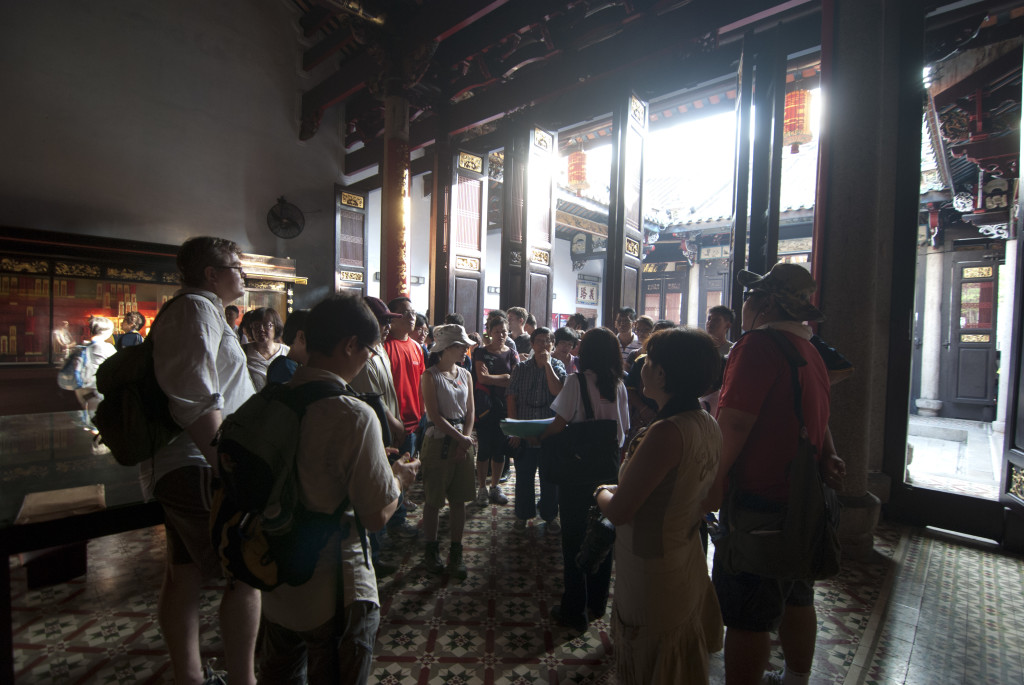
Brownies on a heritage tour during the Penang Heritage Festival. Photo taken at the Han Jiang Ancestral Temple
While the Bukit Brown Cemetery volunteer guides were in Penang, they paid homage to the person that the cemetery was named after. George Henry Brown arrived in Singapore in the 1840’s from India and bought parcels of land around Upper Thomson including Mount Pleasant, which he named because of its pleasant surroundings. Although Mr.Brown did not buy the exact piece of land that now holds Bukit Brown cemetery, his name was adopted as the locals referred to the hills in the area as “Kopi Sua” or Brown’s hill ( *kopi literally means coffee but is here referred to as brown for its colour, due to limitations in the dialect vocabulary.) In the 1880’s, Mr.Brown sailed to Penang following an accident with a tapioca machine on his estate in Singapore, which severely injured his arm. He was there to recuperate in his brother’s home but complications from injury set in and he passed away. He was buried at the Old Protestant Cemetery in GeorgeTown.
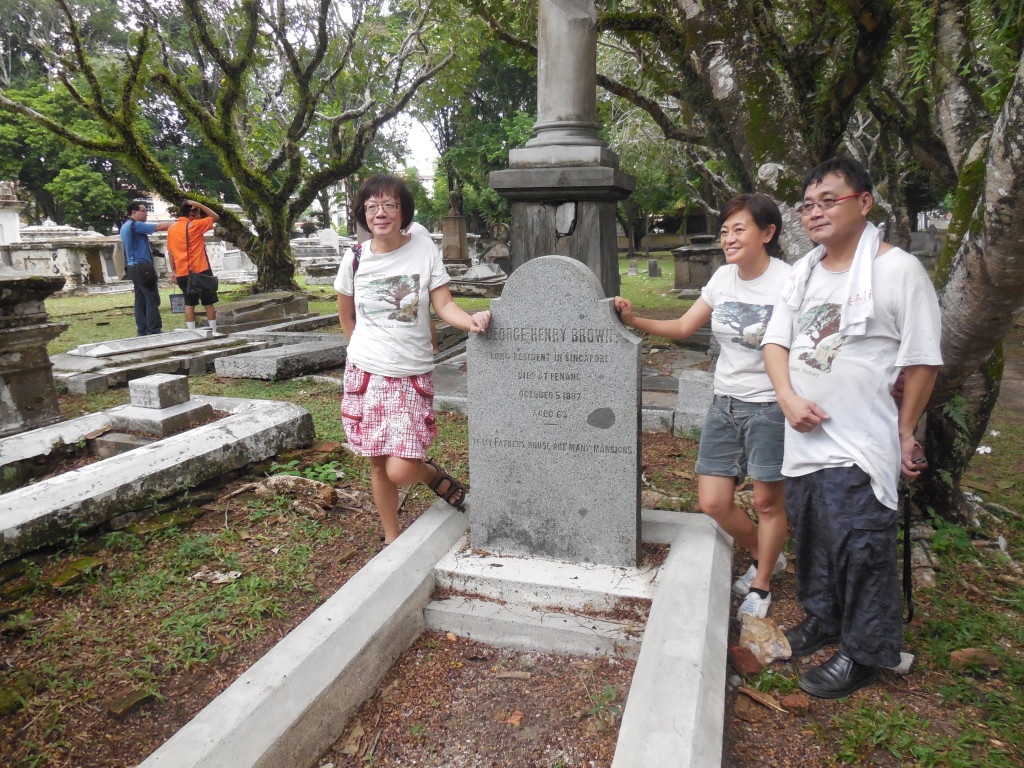
A moment of reflection and wonder for the Brownies at George Henry Brown’s resting place. Picture by Cuifen
The Old Protestant Cemetery is the oldest christian cemetery in Penang. It is where Sir Francis Light, the founder of colonial Penang, was also laid to rest. Thomas Leonowens, the husband of Anna Leonowens is also buried there. After the death of her husband, Anna moved to Singapore and with George Brown and Tan Kim Ching’s (son of Tan Tock Seng) recommendation, she became the English tutor to the children of King Mongkut in Siam. Her story is immortalized in various versions of The King and I (or Anna and the King).

Some of the tombstones from tombs damaged by WW2 air raids were salvaged and installed along the walls of the cemetery.
Kapitan Chung Keng Quee (1821-1901) and the Tan Kim Ching (1829-1892) connection
High on the Brownie itinerary, was the hunt for the biggest tomb in Penang (and possibly in Malaysia). The immensity of the space where life sized statues guard the grand tomb of Kapitan Chung Keng Quee is a jaw-dropping experience. Kapitan Chung or Ah Quee was a leader in the Chinese community and was known for his generous contributions. He was also the headman of the Hai San secret society who led the group through the 4 Larut Wars and supported the Pangkor Treaty. The fierce fighting over the booming tin mining territories in Taiping (formerly known as Larut) involved members of the Ghee Hin and Hai San secret societies from as far as Singapore. To end the bloodshed, Prince Abdullah who himself was embroiled in a succession crisis and was sympathetic to the Ghee Hin faction, traveled to Singapore to seek help from Tan Kim Ching. As a prominent leader in the Chinese community Tan brought to bear his influence in the matter and called on the British administrators who had charged of The Straits Settlements to intercede and broker a peace agreement. The rest as they say is history. The Pangkok Treaty ended hostilities with a truce and Larut was then named Taiping – 太 (tai – ‘great’) and 平 (ping – ‘peace’). More on Romancing Taiping here.
Back in Georgetown, Penang, Kapitan Chung was also known for his expansiveness and exquisite taste in architecture and all things Chinese culture and history. His grand townhouse in Georgetown showcases some of the finest artisan work of that time imported from both China and Europe and is now opened to the public as the Penang Peranakan Mansion. Next to his townhouse is Kapitan Chung’s private temple. A life-size bronze statue of Chung stands in this temple.
Khoo Tiong Poh (1830-1892) and Tiong Bahru
Resting at a corner of the Jalan Free School roundabout is buried the man who is named for Tiong Poh road in Singapore, Tiong Bahru. Khoo Tiong Poh was a Chinese merchant and ship owner. He owned the shipping and trading company, Bun Hin & Co at Malacca Street, in Singapore, and within a few years opened branches in Penang, Hong Kong, Amoy and Swatow, making it the largest and leading shipping enterprise in the Straits. He was also known for his philanthropic deeds which included donations made to cemeteries and temples in Penang, and to the coastal defence and flood relief in China, earning him the title Dao Tai 道台 by the Qing government.
After a prolonged illness, Mr.Khoo passed away in Singapore and his body was shipped to Penang to be buried at his plantation. His son, Khoo Phee Soon, who resided in Singapore till his eventual death is buried in Bukit Brown Cemetery.
Khoo Kongsi
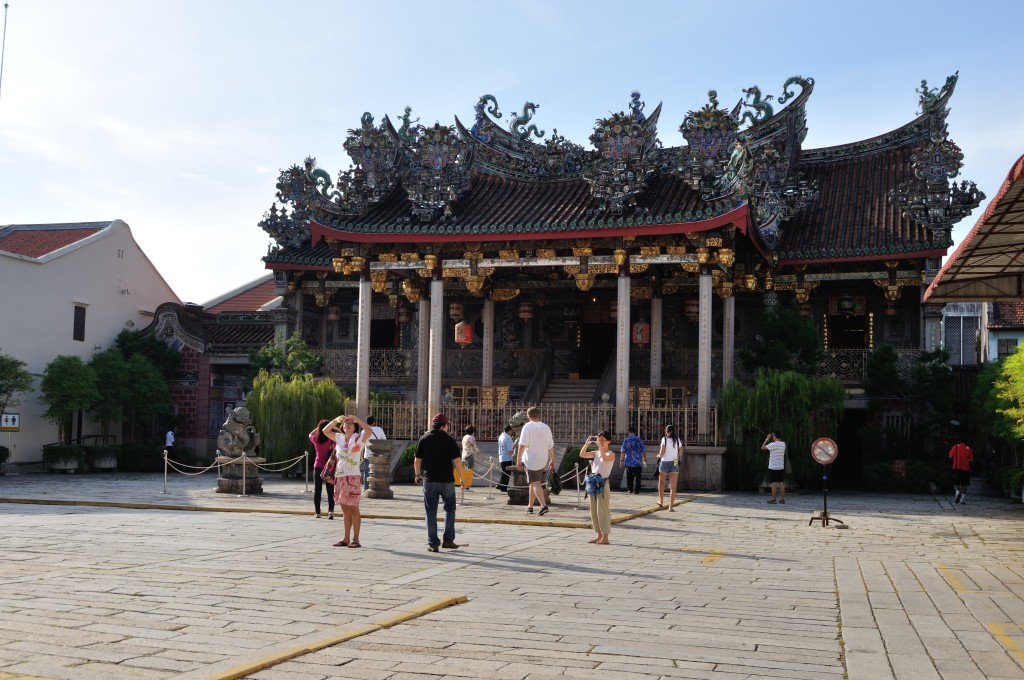
Brownies approach the grandest temple in Malaysia, Leong San Tong Khoo Kongsi clan temple (photo by Ang Yik Han)
No trip to Penang is complete without visiting the Leong San Tong Khoo Kongsi. The clan association which has opened it doors to the public as a living museum, displays the rich history behind the Khoo lineage, the grand architecture, and the elaborate Chinese decorations, paintings and carvings. It also showcases prominent pioneers who made their names in the society and contributed generously to the community in Malaya and Singapore. These men include Khoo Seok Wan, Khoo Teck Phuat and his father, Khoo Yang Tin.
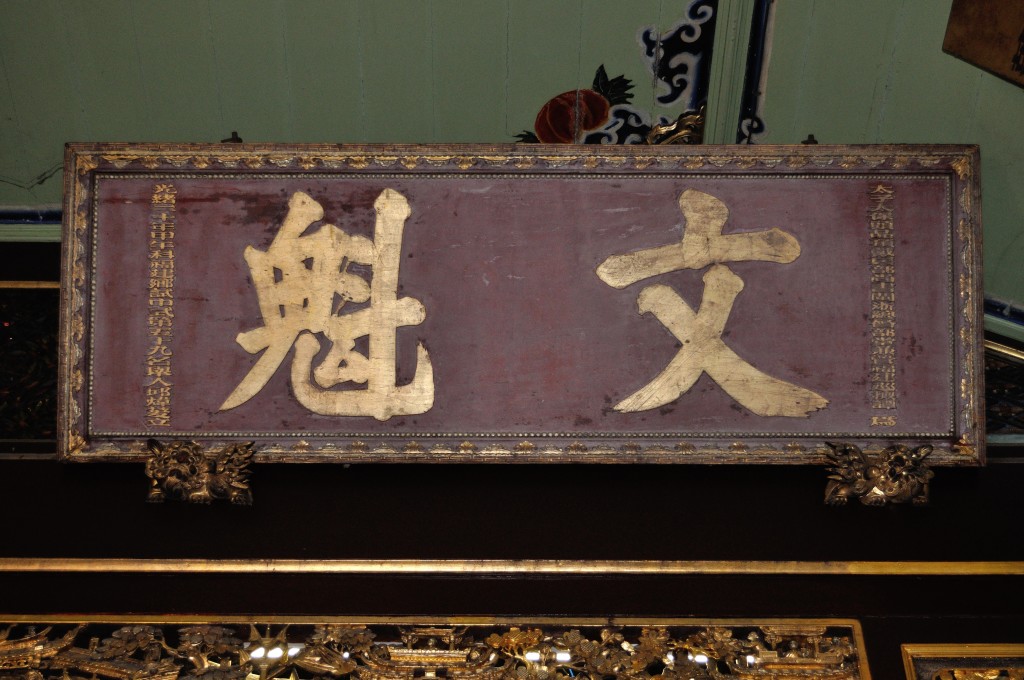
A plaque of recognition in the ancestral hall bearing Khoo Seok Wan‘s name
Over the years, the Leong San Tong has gone through a number of restorations. Over the span of 3 years (1999-2001), the biggest restoration exercise saw conservation specialists and craftsmen from China and India, flown in to work on restoring and reinstalling parts of the building with materials that were traditionally used. These included traditional organic paint, and terracotta tiles which were imported from China. The massive restoration brought Leong San Tong’s shine back to its authentic glory and garnered the National Heritage Restoration Award in 2000, and helped sealed Georgetown’s UNESCO World Heritage status in 2008.
For the few short days, the Brownies visited a few other sites in Penang which had links to Singapore but yet to explore some completely, saving them for future Brownie adventures.
=================================================
Acknowledgements :
We are grateful to members of the Penang Heritage Trust for their hospitality and guidance in our trip. Special thanks to Salma Khoo, Lim Giak Siang, Clement Liang and Joanna Khaw.
A special mention is the place the Brownies called ‘home’ for 3 nights; the Ren I Tang Heritage Inn. The shophouse once housed the oldest traditional chinese medical practice in South East Asia, Yin Oi Tong, for 124 years. It went through a 2-year restoration process which retained much of the original features, including the air-well, wooden staircase and roof tiles. Today, one can find himself soaking in Ren I Tang’s history at the comfort of his room, while sipping a cuppa at the bistro or just bybrowsing through the museum.
About the Brownies and their off-site sojourns:
The Brownies’ yearning to connect to history and thirst for adventure, brings them to various locations within and beyond Singapore. The objectives of these retreats are, to study the historical and cultural links to Singapore, and to strengthen kinship amongst the brownies.
(Brownies are the volunteers who conduct regular weekend guided walks and independent research on heritage, habitat and history of Bukit Brown Cemetery.)
He was an old trustee of the Soon Thian Keing (Temple) who together with his wife is buried at Bukit Brown. Through his personal memories, Ho Siew Tien (1864-1960) helped shed light on the temple’s history.
This story by Ang Yik Han begins with the origins of one of the oldest temples in Singapore.
***************************************************************************************
In the 1980s, a debate took place in the local newspapers over the age of an old Chinese temple dedicated to the earth deity Tua Pek Kong in Malabar Street. Historians argued over an ambiguous phrase in one of the temple’s old stelae, which stated that the temple, the Soon Thian Keing (順天宮), was established during the years of the reigns of Jiaqing and Daoguang (“嘉道之際”). As the Jiaqing Emperor ruled from 1796 to 1820 and Daoguang from 1821 to 1850, proponents of an earlier dating for the temple argued that its establishment may have predated the founding of Singapore in 1819. However, there was no direct evidence to support this claim. No artefacts survived from the temple’s earliest days and the stele in question was erected only in 1902 when the temple was reconstructed.
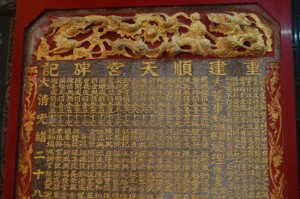
Part of the 1902 stele still preserved in the Soon Thian Keing today. It shows the main temple sponsors and major contributors to the temple’s building fund (photo Yik Han)
One the earliest known accounts of the Soon Thian Keing before its reconstruction was an interview given by one of its trustees, Ho Siew Tian (何秀填), in 1949. He recalled that when he first arrived in Singapore in 1882 at the age of 18, the temple was only a small shrine located next to a tree which housed the Tua Pek Kong statue. The shrine was refurbished by two merchants in 1888. It was only in 1902 (28th year of Guangxu’s reign) that some merchants based in the Sio Po area (the colloquial Chinese term for the part of town north of the Singapore River) came together to construct a proper building for the temple.
Other than getting a new building, the turn of the 20th century was significant for the temple for another reason. Some Hokkien merchants started a school in 1903 and then turned to the temple committee for funding to sustain the school. Thus began the decades long association between the temple and the Chung Cheng School (崇正学校) [not to be confused with Chung Cheng High (中正學校) which was managed by the Hokkien Association].
Every year, the temple provided for the school’s upkeep from the money paid by the resident monk who was contracted to run the temple. In 1916, a school for girls, the Chong Pun Girls School (崇本女校) was started and likewise funded by the temple. Committee members of the Soon Thian Keing sat on the boards of both schools. Prominent alumni members of the Chung Cheng School over the years included Lee Kong Chian and President Ong Teng Cheong.
As the number of students increased, the need for new premises for both schools was keenly felt. In 1938, the construction of a new school building at Aliwal Street was completed. This housed both the Chung Cheng School as well as the Chong Pun Girls School under one roof. It was recorded that Ho Siew Tian was a prime driver in the construction of the new school building along with the then temple chairman. A trustee of the Soon Thian Keing since 1933, he was concurrently the treasurer of the temple and the two schools, a position he held till after the war.
Hailed as one of the most modern Chinese school buildings of its day, the building has been preserved and is today the Aliwal Arts Centre.
As Aw Boon Haw donated substantial funds towards the building’s construction, the school hall was named after his company, Haw Par.
Old photos dating from 1950 which showed girls of Chong Pun exercising in the school field, today a carpark. Sultan Mosque can be seen in the background.
Ho Siew Tian ran a thriving hardware and building materials business under the chop Ho Hock Ann (何福安) at Beach Road. He also owned a number of twakows for transporting goods. As his wealth grew, he made substantial investments in properties. In 1948, he incorporated his firm as a limited company and handed over its running to his sons, who subsequently expanded the business to firearms.
It was urban redevelopment which spelled the end for the temple and the schools. In 1980s, the temple was acquired by the government for building the MRT. It moved successively to various temporary sites before its present building at Lorong 29 Geylang was completed. With the resettlement of the urban residents in the area, dwindling student enrolment led to the closure of Chung Cheng School in the 1980s as well. Its name was transferred to a primary school in Tampines.
Soon Thian Keing today in Lor 29 Geylang (photo Yik Han)
Ho Siew Tian is buried at Hill 4 together with his wife who died 12 years before him. According to obituaries in the Straits Times and the Singapore Free Press, he was one of the oldest men in Singapore at the point of his death at the age of 96. He was survived by 5 sons (2 other sons died before him), 3 daughters, 2 sons-in-law, 7 daughters-in-law, 81 grandchildren, 8 grand sons-in-law, 4 granddaughters-in-law and 37 great grandchildren.
Ang Kok Kian – A Pioneer of the Soap industry
by Ang Yik Han
It is not clear if Ang Kok Kian (洪轂堅) grew up in Penang or he travelled there from his ancestral village in Nan’an county, Fujian province. During the 1910s, he moved to Taiping with his family but left after two years for Singapore, where he felt there were better prospects.
Of the businesses he established in Singapore, the most successful was the See Sen Soap Factory (時鮮肥皂廠), one of the local firms which rose to challenge the dominance of the market by Western manufacturers then. Although sales trailed behind another local firm Ho Hong Soap Factory, its distinctive “Dog’s Head” (狗頭標) brand soap was popular in Singapore, Malaya, Borneo and Hong Kong, both before and after the war.

Dog Brand Trade Mark (Source https://moulmeincacc.wordpress.com/2014/06/03/castle-at-no-19-barker-road/)
Ang Kok Kian passed away in 1939, leaving behind 4 sons. By then, his eldest son Ang Hai Sun (洪海山) was actively involved in the family business. Not content with expanding the soap factory, he went into oil milling to ensure a stable supply of raw materials for the factory.
Although “Dog’s Head” soap has disappeared from the market for decades, the mark of this locally produced soap can still be seen today adorning the house which Ang Hai Sun built, where his descendants still reside.
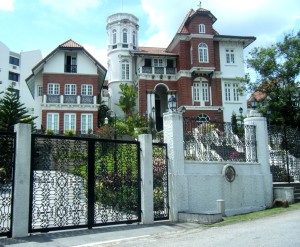
Home of the present descendants of Ang Kok Kian (source https://moulmeincacc.wordpress.com/2014/06/03/castle-at-no-19-barker-road/)
More information on his descendants here
Double tomb of Ang Kok Kian and his wife at Bukit Brown Hill 4
We kicked off the first Bukit Brown Tour & Clean-Up Corporate Social Responsibility (CSR) event of 2015 on 16 May 2015 with a record number of 50+ volunteers. The volunteer sign-ups were overwhelming and the organizing team had to cap the group size due to logistical limitations.
Heritage preservation is certainly a CSR theme that is catching on at Standard Chartered Bank! Read on to find out what one of our volunteers experienced…
By Hemanshu Parekh
(photo credit : compilation of StanChart & All Things Bukit Brown)
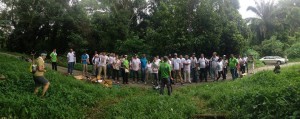
Pictured: Supported by 35 volunteers when this initiative first started out in 2014, the Bukit Brown Tour & Clean-Up effort is seeing growing interest from Bank staff and has hit a record of 50+ volunteers at the fourth session held on 16 May 2015.
New to this event, most of the volunteers signed up for this event not knowing what to expect. At the end of the day, it turned out to be one of the most rewarding and satisfying CSR effort we have ever experienced!
The day started with volunteers assembling at the gates of Bukit Brown Cemetery, which was also the starting point of our tour of the heritage site. We were split in 2 groups – newbies and repeat volunteers. While repeat volunteers were taken on a tour route that included the nearby kampong (village), newbies like myself went on an “orientation” route, with Catherine as our guide.
Catherine – like all other guides –is a ’Brownie’ who is dedicated to conservation work and conducting tours for Bukit Brown. ’Brownies‘ have been investing their weekends on this project for over 3 years now.
Catherine started the session by giving us basic education on the cemetery and Chinese tombs.
The layout of Bukit Brown Cemetery, first followed a grid system, meticulously drawn by the British for the Chinese during colonial times. The cemetery is known as the “mother cemetery” as it also hosts the graves from other cemeteries which have been taken over by development.
As the resting place of many pioneers of Singapore, some of the bigger and elaborate tombs hold tremendously historical value, particularly since many Chinese tombs in China were destroyed during the Cultural Revolution.
The Chinese did not like the structured grid pattern laid down by the British, as that did not conform to the all-important Feng Shui or geomancy considerations for burial, such as elevation, the presence of water bodies, the direction the tomb faces, etc. Obviously, the stature and wealth of the deceased would determine whether the tomb could incorporate all the desirable Feng Shui elements. Historians have noted that while the initial tombs are laid out in a structured pattern, subsequent ones had more generous layouts – obviously Feng Shui took precedence over orderliness.
Standing beside a tomb, Catherine proceeded to explain the layout of typical Chinese tombs. The tombstones of Chinese tombs were actually the foot stones. At burial, the body was slightly elevated such that the head was higher than the feet. Tombs belonging to the Hokkiens, were constructed in a rounded shape so as to resemble a tortoise – which has positive Feng Shui connotations.
Granite was the most commonly used stones for constructing tombs, and they were sometimes imported from China for the purpose. Marble stones were also used at times.
Couple tombs always had the husband positioned on left and wife on the right. A pair of lion statues was usually installed as tomb guardians, where male lions were depicted with a foot standing on a ball, while female lions had a cub by its side. The “gender” positioning for tombs are male always on the left and female are always, right. The plot for tomb had to be purchased in advance and would cost about Straits$ 6 – 30 per plot in 1924.
As Singapore became an important trading port where many cultures intersect, some Chinese tombs incorporated non-Chinese cultural elements. Some tombs emulated aesthetic practices of the British like the use of decorative tiling. In the later years, tiles were imported from Japan and bore Asian- inspired designs –European tiles used abstract designs while Asian tiles featured auspicious motifs like flowers and fruits.
When we stopped by a majestic hill tomb, Millie, another guide, took over the story telling. This was her great grandfather’s resting place. About 4 years ago, she learnt that her great grandfather was laid to rest in Bukit Brown. She spent time researching his tomb and eventually located it in the vast cemetery. She then spent time restoring the tomb, which was overgrown with vegetation.
Her story is not an unique one – in recent years, a number of people have located the tombs of their ancestors through research and search, restored dignity to the forgotten tombs, reunited the living with the deceased and uncovered intriguing stories of the past. Often, the experience of locating one’s ancestors’ tomb is an emotional one. The amalgamation of numerous personal stories and anecdotes form a deep historical narrative for the heritage cemetery.
We saw another tomb where turban clad Sikhs statues took the place of the typical lion guardians. Years ago, one of the traditional professions that Sikhs took on was that of policemen and guards to the wealthy – and they were revered for their bravery and dependability. Hence, the erection of Sikh guardian statues was a way of paying homage to the Sikhs professionalism. There are to date 26 pairs of Sikh guardians found in Bukit Brown cemetery.
We came across a few tombs which had various mythical creatures as tomb guardians. We were told that in China, there were strict rules governing the use of mythical creatures as tomb guardians as they were reserved for government officials or even royalty. As the Chinese saying that goes “Far from the Emperor, Far from Judgment” – the Chinese in Singapore had the liberty of flaunting these rules without fearing the Emperor’s wrath.
The tour lasted almost one hour and ended at a clearing where an array of equipment were neatly laid on the grass for the second part of the event – tomb cleaning.
After a comprehensive safety briefing, we were split into 5 teams of 10 volunteers. The teams were tasked with different duties: 2 teams were assigned to heavy duty tomb cleaning work, which involved clearing dense overgrowth and tree cutting; 2 teams were tasked with clearing and cleaning tombs with moderate undergrowth; and one team was to pick up rubbish along the trails. I volunteered for the heavy duty work.
My team was tasked with cleaning the neglected tombs in the Cheang Hong Lim family cluster. There were a total of 8 tombs and half of them were almost completely covered by undergrowth, shrubs and small trees.
The task seemed daunting at first and the undergrowth was very thick, oftentimes colonised by unfriendly red ants. We gritted our teeth, picked up our equipment and started work under the guidance of veteran volunteers. After a while, we got the hang of the work, and progressed faster.
The first sense of satisfaction came when we hit concrete and uncovered the forecourt of the first tomb we worked on. After that, it became a drill: cut the shrubs and trees, clear the undergrowth, find the forecourt, then clear the vegetation off the forecourt and tombstone.
Teamwork was the order of the day, as we alternated between the tasks of cutting, cleaning and disposing of debris.
We were drenched in sweat and hard at work when we were told we had only 10 minutes left – time really went by quickly when you are engrossed in work! Not wanting to do slipshod work on the few remaining tombs, we doubled up our efforts like schoolboys during the last 10 minutes of their exams.
When we were done, we high-fived one another and admired our work with a strong sense of achievement and satisfaction. We took group photos and shared smiles and cheers with fellow volunteers and the Brownies. Some volunteers claimed that this was the most challenging and satisfying CSR ever. Most of us agreed it was definitely a unique, educational and satisfying experience!
We reached the end of the official activities and most volunteers left. A handful of us, who had not had enough, decided to take a final tour to the famous Ong Sam Leong tomb, reputed to be the biggest and most majestic in Bukit Brown. We reached the tomb after a 15 minute hike up a hill. The size of ten 3-bedroom HDB flats, it truly was a majestic tomb. The tomb belonged to yesteryear phosphate magnet Ong Sam Leong’s family. It was constructed with high quality granite, adorned with numerous intricate carvings (the stories behind the carvings could easily fill a book), and it even had a moat where once contained fishes! Our guide Claire highlighted that this is the only tomb that can be seen from Goggle Earth.
The day ended with us being a little more educated on history and exhausted from the laborious morning. Besides leaving with a tremendous sense of satisfaction for our heritage preservation work, I’m sure we also left with the blessings of the many pioneers resting on Bukit Brown!
********************************
All Things Bukit Brown and the Brownie volunteers would like to say a huge “thank you” to the Stanchart crew for their heart and hard work.
Welcome to a new year, as we cross the threshold into 2015, we look back on the year that has passed.
A is for Advocacy
On 30 August 2014, “The Bukit Brown, Brownies” became the first recipient of the Civil Society Advocate Organisation of the Year Award in the inaugural Singapore Advocacy Awards.

The Brownies with Constance Singam, one of the judges and a highly esteemed civil activist and writer
It was an honour that we could not have dreamed off when we started our journey in January 2012 to raise awareness about the heritage,habitat and history of a 90 year old cemetery, that many say had been “abandoned” and “forgotten”.
Well, here’s the news, they were wrong. And this is why: over 13,000 participants to the guided walks – comprising a demographic from all walks of life, from all ages, from students to community constituency groups, photography enthusiasts, international academics, meet-up groups, and media crews, travel writers, civil servants, docents etc etc; 4 exhibitions over 2 years, the first ever listing for Singapore as a heritage site under threat, under the World Monuments Fund Watchlist 2014, and this year alone, 3 major academic publications. It is a record which speaks for itself, carried by a momentum, best described as organic in nature, and a ground up initiative. When it comes to development in Singapore and how it impacts our history and heritage our sense of identity and place , Bukit Brown as a cause, as a movement, as a place in the memory scape of Singaporeans, refuses to die.
B is for Bukit Brown
2014 was a year Bukit Brown went off-site and “broke new ground” in 2 major exhibitions and inaugural guided walks in the City.
In March, Woon Tien Wei and Jennifer Teo, the husband-and-wife artist-activist team behind Post-Museum curated “The Bukit Brown Index” which was one out of 28 local works featured in an exhibition called “Unearthed” The highlight of their work was a wall on which the names of the exhumed and unclaimed which had to make way for the highway through Bukit Brown, were hand written with the help of Brownies, among others in the heritage and artistic community.
In July, Bukit Brown : Documenting New Horizons of Knowledge was officially opened by MOS (MND) Desmond Lee at the National Library. It represents almost one and half years of research and working the ground documenting some 4,153 tombstones which are affected by the building of a new highway across Bukit Brown, by a team under the leadership of Dr. Hui Yew-Foong, an anthropologist with ISEAS. The exhibition is currently on tour at regional libraries until next year.

The Exhibition at Choa Chu Kang Library (photo Mok Ly Yng) The next and final venue will be at Toa Payoh Public Library. It will open from 4 January 2015 (Sun) till 31 January 2015 (Sat).
In conjunction with the exhibition, All Things Bukit Brown curated 2 special guided walks The Descendants Stories which featured descendants of pioneers sharing their stories of uncovering their roots in Bukit Brown.
Our march into the city was sealed when we partnered the Singapore Heritage Society and co-curated the Bukit Brown in the City and the City in Bukit Brown Walk walks for the Singapore Heritage Festival 2014 in July.
In May, we partnered Jane’s Walks and curated a walk which took participants from the Botanic Gardens to Bukit Brown , bridging the colonial and immigrant narratives of our history.
And in a nod to the Bukit Brown Jane’s Walk, 2 participants Louise and Bridget organised of their own initiative and without any assistance from the brownies, a guided walk for a group of ten of their friends in September. We thank them and hope they will do more!
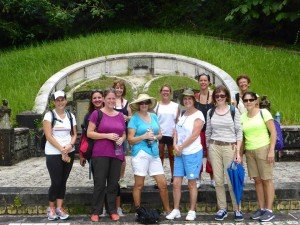
Louise’s and Bridget’s Guided Walk for friends in September inspired by their participating in the Jane’s Walk (photo Louise Ragget)
In September also All Things Bukit Brown, was invited to make a 10 minute presentation in the “Singapore Dreaming” workshop by the Asian Urban Lab as a lead up to a the major conference in 2015 where leading artists, academics, professionals and other thinkers across diverse disciplines will share and explore alternative visions of a Singapore that is sustainable, creative and vibrant.
In 2014, Bukit Brown continued to be featured in student media projects, international news analysis on Singapore’s issues of development and heritage, local TV programmes from “My Grandfathers’ Road” to “Secret Singapore” and its sheer beauty and remembrance of Singapore as as a major battleground in WW 2 was visually showcased in an award winning art house film called “The Canopy” screened at this year’s Singapore International Festival in November.
Next year, watch out as one of the Brownies will guest host a new programme on Channel 5 to introduce Bukit Brown.
After a hiatus and the completion of The Adam Park Project TAPP , the ever popular Battlefield Tours conducted by Jon Cooper returned – once a month every first Sunday – and continue to be over subscribed.
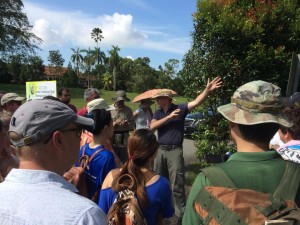
Last Battlefield Tour of 2014 by the lively and knowledgeable war archeologists Jon Cooper (photo Bianca Polak)
In 2014, we conducted more guided walks by private request. Of all the requests for guided walks, the most enthusiastic and frequent requests came from our educational institutions from secondary to tertiary institutions both local and international for “Learning Journeys”
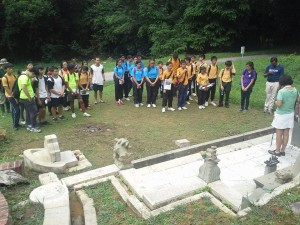
Dunman Secondary School students observing a minutes silence at the grave of Tan Ean Kiam (photo Yik Han)

JNV-Students-at-Ong-Sam-Leong-photo-All-Things-Bukit-Brown
We shifted gears from guided walks and organised on request by Standard Chartered Bank, a Corporate Social Responsibility event which was so successful, the bank has already completed 3 sessions at Bukit Brown of clearing and cleaning selected tombs between May and November 2014. They will make a comeback in 2015.
On site, discoveries continued to be made. This year alone, the two great finds were the founder of Hong San See temple Neo Jin Quee and the family cluster tombs of Lee Kuan Yew maternal ancestors.

Zaobao report on finding Neo Jin Quee, founder of Hong San See Temple, May 5, 2014
On site, as we have done, for every year since 2012, we celebrated NDP ’14 , Our Bukit Brown, Our People with both gusto and with sadness in an landscape which has changed and will continue to change as the road works encroach slowly but surely .
On site, sometime in November, while we were not looking, the ole raintree was chopped down and overnight it was gone, our consolation comes from our shared memories.
C is for Community
It has been the heart of community and your passionate support which has sustained, encouraged and uplifted the Brownies over the past 3 years. A community which includes academics, journalists, artists, writers, descendants, tomb keepers and fellow activists in heritage and the environment. We single out for our gratitude the Singapore Heritage Society and the Facebook Group Community Heritage Singapore- Bukit Brown Cemetery.
When a call was made for feedback to be given on the URA Draft Masterplan 2013 in December of the same year, we received some 30 responses which were sent to the Ministry of National Development. You wrote on how important it was to preserve Bukit Brown for future generations, for the environment, as a space important to root Singaporeans to the land and for the sharing of collective memories.
In June 2014 the Masterplan was gazetted with no changes to plans for Bukit Brown. But if you thought, your efforts were for naught, let us reassure you, it was noted and it did make a difference in paving the way for better engagement on the future of Bukit Brown. We have only just began.
In 2014, three major academic papers on Bukit Brown were published
We thank : (Drs) Natalie Pang and Liew Kai Khuin “Archiving the Wild Archivists”, Dr Terence Chong (Singapore Heritage Society) “Bukit Brown municipal cemetery: Contesting Imaginations of the Good life in Singapore” and Prof Huang Juanli ” Resurgent Spirits of Civil Society Activism: Rediscovering the Bukit Brown Cemetery in Singapore” for their comprehensive and thoughtful and thought provoking papers.
To the descendants who have trusted us with their stories, we salute you.
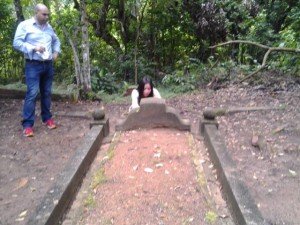
Gillian Lim-Mendy with her husband flew from London to pay their respects to their Grandfather Lim Hock Seng for the first time in December. Her story can be found here (photo Catherine Lim )
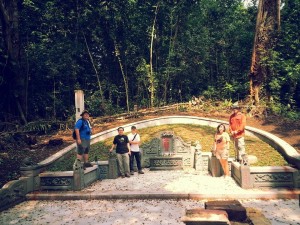
Brownies visit the grave of Yap Geok Song, newly renovated after descendants contacted Peter Pak to show them their ancestor’s tomb after reading his blog
And a special mention and shout out to Zaobao journalist Chia Yei Yei and the heritage reporters of Zaobao for the breathe and depth of coverage they have given to all things related to Bukit Brown from pioneers to Brownies in 2014.
The Chinese daily capped off the year in recognition of the part the Goh Brothers have played in uncovering our historical and heritage gems by headlining them among the paper’s Personalities of 2014.
We ended 2014 on site, in the last guided walk of Bukit Brown for the year with some 50 people turning up.
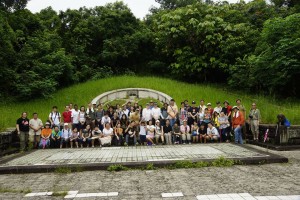
Collections, Recollections and Our Favourite Moments, last guided walk for 2014 on Sat, 27 Dec (photo Yeo Hong Eng)
50 is of course a significant number as we cross the threshold into 2015. 2015 is SG50, a year of national celebration of 50 years of our history and achievements. But what can we look forward to in a landscape which will continue to be pockmarked and drastically changed by construction work on the development of a highway?
We will keep calm and carry on, engage constructively, walk the ground, walk the talk, continue to be excited by new discoveries and we will – and this is a clue – write a new chapter on our past and take it into the present. In short, we will continue to honour our heritage, habitat and history, and remember those who laid down their lives in memoriam for without them, SG50 would not be possible.
“Lest we Forget”
We remember Victoria Tan and Edmon Neoh-Khoo
RIP
Compiled by Catherine Lim
All Things Bukit Brown congratulates Raymond and Charles Goh who have been chosen by Chinese news daily Zaobao to be included in their list of Personalities of 2014. For the Brownies, it is a timely recognition for the 2 brothers who have been exploring and uncovering the “lost” heritage and history of Singapore since the mid 2000s. Their hard work, sheer doggedness in research and walking the ground, is our inspiration, and we are proud to claim them as Brownies and proud, we walk with them
===============================================
Translated Article by Raymond Goh
2014 Personality of the Year by Zaobao weekly, Dec 28, 2014
Raymond Goh (51) and Charles Goh (46), Looking at history through the departed
If not for praying to one’s ancestors, one would not usually go to the cemetery. That day the reporter asked a taxi driver to drive her to Bukit Brown cemetery. The driver was not very happy, and so she has to alight at approx. 200 metres from the cemetery at the road cross junction. But the Goh brothers does not have any sort of taboo. They keep on bringing people to the cemetery to look for their roots, rediscovering old tombs hidden in the depths of the forest, bringing history back to life.
Ever since Sep 2011 when news broke out that part of Bukit Brown has to give way to a road and approx 5000 tombs has to be exhumed, nearly twice a month during weekends and public holidays, one would see volunteer guides from all walks of life known as “Brownies” wearing Bukit Brown heritage T shirts, and guiding the public on the history and heritage of Bukit Brown.
Raymond and Charles Goh are a familiar pair among the Brownies and the pioneering guides among them.
Bukit Brown Pioneering Explorers
Charles Goh is a construction safety manager and has from young like to explore the unknown to get to the root of matters. Some things will be forgotten or disappear as one grow up, and Charles hope to revive the forgotten collective memories. Since the SARS crisis of 2003, Charles responded to the call of STB and together with his brother registered as tourist guides. They do voluntary guiding for visitors to the cemetery, and let these visitors know Singapore in an unique way.
Together with Raymond Goh, a pharmacist, they founded Asia Paranormal Investigators, as a step forward to fulfil their ambition to research all things unknown. Since 2006 they also started to lead tours to Bukit Brown, do research into tombs and even design a cemetery map for the public to do DIY tours on their own.
Raymond said that Bukit Brown and the surrounding Seh Ong and Hokkien cemeteries has a total of 200,000 tombs, with the earliest dating all the way to 1826. From that year to the closure of the cemeteries in the early 1970s, one can see 150 years of changes and transformations reflected through the tombstones of Bukit Brown. Our history is gathered piece by piece from the collective stories of all these tombstones.
2014 Great Finds
Through the efforts of Charles, Raymond and the Brownies, there has been a surge in interest to find one’s ancestor. Due to the passage of time and insufficient information, the success rate of finding one’s ancestor for these tombs is only about 50%, but the rediscoveries of pioneers’ tombs provide much encouragement to the Goh Brothers. This year alone, the two great finds are the founder of Hong San See temple Neo Jin Quee and the family cluster tombs of Lee Kuan Yew maternal ancestors.
According to the archives, Hong San See founder Neo Jin Quee was relocated to Bukit Brown cemetery. When Raymond Goh first encountered this tomb, he combined forces with local history researchers Walter Lim and Ang Yik Han to research into this tomb and finally confirmed the identity of this tomb. The discovery of Neo Jin Quee’s tomb and the tombs of his wife, son and daughter-in-law provide important clues to the study of the immigrant stories of early Lam Ann people to Singapore.
Apart from this, in Jun this year, a news report to find the rickshaw puller Koh Teong Koo made Raymond recalled about Lee Kuan Yew maternal grandfather Chua Kim Teng and maternal grandmother Leong Ah Soon. Based on the clue provided by tombkeeper Soh Ah Beng, Raymond and Walter Lim finally found the tombs of Chua Kim Teng, his second wife and his father’ tombs. They later managed to find Leong Ah Soon’s tomb from the burial register, that is Chua Kim Teng’s third wife. The Chuas were a typical Peranakan family, and Chua Kim Teng was a successful merchant. These finds provide important historical information for the study of this early Chua pioneer family.
Apart from graves, Charles Goh is also interested into heritage sites and ruins. Not long ago, together with NHB Group Director (Policy) Alvin Tan, they rediscovered a century old lunatic asylum wall, which provide valuable information for the study of this early institution.
The greatest difficulty in finding graves is not mosquitos and insects bites, nor wild snakes or animals, nor wild vegetation, but the limited information and resources to find the graves.
Although there are burial records in Bukit Brown, many descendants does not know the dates their ancestors passed away, and some can only remember their ancestors’ Chinese names, while the records are in English. The lesser the information, the more difficult will be the tomb find.
As such, Raymond said that sometimes it require more than the efforts of one or two persons, but the combined efforts and expertise of many volunteers to help find a tomb.
As for 2015, the Goh brothers will keep on their volunteer work of researching and finding tombs, and their mission is to find an earlier tomb than 1826 as there were already Chinese people then who died before that.
By Mok Mei Ngan
Catch a video of Raymond Goh on zaobao.com, sharing his interesting discovery of Bukit Brown Cemetery here
================================================
Zaobao weekly – 2014 Personality of the Year
They may not be famous people in the limelight,
But yet each in their chosen field give out their own light and heat and leave behind beautiful imprints in 2014
There is a Western proverb “The devil is in the details”, which means that it is in the details which spell success
These six personalities selected by Zaobao Now are chosen especially for their insightful analysis and acute observation, taking care of the whole situation, yet not leaving out the smallest details to ensure success for their endeavours
They are :
Two relatively unknown “amateur archaeologists” brothers Raymond Goh and Charles Goh who started to find old tombs to return back history. In this rapidly growing city of ours, they search for old tombs and uncover lost history. They also bring people to cemeteries to search for their roots and let the light shine once more upon the hidden tombs in the forest, bringing history back to life
Artist Ong Keng Seng who revamped the Singapore International Festival of Arts to reach out to a wider audience. His 12 chosen productions attracted widespread discussion
Chef Julien Royer from Swissotel Stamford Jaan restaurant for his passon in the culinary arts and for winning multiple culinary awards, and let foreigners look at Singapore food scene
Photographer Sim Chi Yin. Originally an ST correspondent based in Bejing, she give up journalism for photography, and use her passion for the lens to reflect Chinese mainstream society in China. In July this year She became the only Asian photographer to join the Internationally renowned VII Photo Agency. In Oct she was selected by Her World magazine as this year Young Woman Achiever
Christopher Lee Meng Soon for beig the first non-Taiwanese to win the Best Actor Award in the 49th Golden Bell Awards. His win means that the top awards coming from Taiwan for the Cinema, Music and TV all have been won by our local artistes, and mean that here we do have internationally recognized acting talents.
JJ Lin for winning the 25th Golden Melody Awards for best mandarin male singer. He also won two awards from the 19th annual Composers and Authors Society of Singapore (COMPASS) for top local artiste for the 6th consecutive time and best song writer for the 4th time
Dunman Secondary School brought around 40 students to Bukit Brown on 16 August 2014 for a learning journey. Our students marveled at the vast, rich sloping terrain covering over 200 hectres of land space. Some graves dot all the way to Mount Pleasant Road (along PIE).
Our students know that Joo Chiat and Boon Lay are familiar residential estates but little did they know them to be named after our pioneers who lie buried at BB. Tan Ean Kiam, the pioneer whose foundation donated to the construction of our school hall, lies buried at BB alongside his wife. Our students observed a minute of silence as a mark of respect for him.

Dunman Secondary School students observing a minutes silence at the grave of Tan Ean Kiam (photo Yik Han)
Our students learned about the strong cultural links our pioneers had with China expressed in the Chinese poetry and the rich artistry in the sculptures and carvings on their grave stones.
The ultimate aim of education is known to be character-building, but certain values such as filial piety and fortune expressed in an abundance of descendants and sustaining blood lines, are so deep-seated that our pioneers bring them down to their graves in forms of figurines symbolizing these values. One grave had carvings showing a a daughter in law breastfeeding her aged and toothless- mother-in-law, choosing to feed her over her crying child, in an act of filial piety. Another grave had 2 Sikh guards standing erect and tall each by the side of a rich tycoon’s final abode. He even had them enshrined as a “sepoy” (stationary guard) and a “prowler” (one who patrols around). This setting reveals the trust placed on the Sikhs for protection during colonial times. Our students were amazed by the detail and rich history of Bukit Brown.
Our students learned that war time graves were smaller and have a unique serial numbering. They were also informed that mass graves were a norm during the Japanese occupation from 1942 to 1945.
We offer our deep heart-felt thanks to the brownies ( the Bukit Brown volunteers) Yik Han, Beng Tang and Catherine for an informative and educational tour of BB. Their passion and love for the history and heritage of the pioneers is evident during their explanations and guidance of the tour. We truly believe that Dunmanites in the tour benefited greatly from the sharing and discussions.
By Gopie Silvarajoo Naidu Prem ( Teacher in Charge)
Editors Note:
The students were from the schools NPCC. Their teachers had worksheets which they worked on immediately on-site after the guided walk. The learning journey was documented and later published in their newsletter. We thank the teachers especially of Dunman for going the extra mile to do this despite their very busy schedule. We note that this was the third time the school has requested engagement on Bukit Brown with Brownies for various groups of students. There was one previous visit to Bukit Brown and a brownie had also made a presentation on Bukit Brown at the school itself.
Thank you for sending atBB the PDF of the newsletter.
Schools who are interested in learning journeys, please email a.t.bukitbrown@gmail.com. and give us least 3 weeks notice.
Catherine Lim
1
by Perry Tan
Standard Chartered Bank
In April 2014, in collaboration with All Things Bukit Brown, we conceptualised a guided walk with a Clean-Up at Bukit Brown, where a team of 35 volunteers from Standard Chartered were taken on a guided tour, before spending up to 4 hours cleaning tombs. The organising committee were initially ambivalent about volunteer response and feedback, since such an unique CSR (Corporate Social Responsibility) event at a cemetery was previously unheard of. Our ambivalence proved to be unfounded, as we were pleasantly surprised and heartened by the very positive volunteer feedback. This prompted us to plan 2 additional sessions for the year.
So on a cloudy but dry Saturday morning (13 Sept’2014) , we found ourselves back at Bukit Brown five months after our inaugural CSR event at the heritage cemetery. Read Perry’s report on Standard Chartered Bank’s first CSR @ Bukit Brown here.
The programme was similar – starting with an hour-long tour the tombs of prominent pioneers guided by Claire Leow, co- founder of All Things Bukit Brown (bukitbrown.com) , followed by a clean-up of tombs* in various stages of clean up needed, hand-picked by brownie Khoo Ee Hoon. A few of the volunteers were repeat volunteers, who found the initial session April so enriching that they came back for more. Although we used the same programme, the beauty of Bukit Brown is that it is so rich in history that our guide easily customised our tour to be different from the first one by simply taking a new route and stopping by the tombs of different pioneers.
The presence of repeat volunteers meant that we had a cleaning crew that was semi-experienced. We identified 3 cleaning clusters, two of which were heavily covered with undergrowth and trees. Volunteers were split into 3 teams, with those who were stronger and more experienced assigned to the more challenging clusters. The result was excellent – we were faster, more efficient and managed make quick work of heavy vegetation in our way. We even sawed down and uprooted quite a number of small trees that some of us could now moonlight as lumberjacks!
The day ended up with a light hike up to Ong Sam Leong’s magnificent tomb, where we were treated to a King of the Hill view of Bukit Brown, ornate designs of the tomb and stories of the Ong clan.
We went home sweaty and slightly filthy, but fulfilled by the meaningful work we did. Once again, a few volunteers enjoyed the experience so much that they indicated their interest to join us again in the next round – this certainly is starting to look like a sustainable CSR initiative that brings a very progressive heritage ring to tthe Bank’s “Here for Good” brand promise!
Here’s what some volunteers had to say about their experience…
“It was a very nice experience, learning about the history of Singapore, and the people who built Singapore and gave opportunities to many others who follow. It is a very historical area – good place to visit for the people who want to know more about the history and preserve it.” Hari Natarajan
“I am very glad to be part of the team and it was a wonderful experience. I learnt a lot about Singapore’s history and enjoyed the physical exercise as well. Although the event dealt with graves, there was no taboo, but actually fun. And I think this heritage and history theme goes well with our slogan of “Here for Good”. We remember history, we are here for good.” Ye Yang
Editors note:
*Tombs selected for cleaning are those which – for reasons unclear – have been forgotten and have not been visited for a number of years. One reason shared with us by descendants who have been recently reunited with their ancestors, is the main caregivers had themselves passed on. In respect for the tomb keepers whose livelihoods for generations are dependent on the services provided to descendants, All Things Bukit Brown, to the best of its abilities, ensures that no tomb selected for volunteer cleaning is not under the care of tomb keepers. Our hope is that a tomb once cleared will reveal information that will trigger a memory which will lead to a reunion. We believe in Serendipity because it has happened.
We are heartened and encouraged by the experience of Standard Chartered Bank and thank them for initiating this project. If you are corporation or a community group and are interested in sharing their experience, please drop an email to a.t.bukitbrown@gmail.com. Subject Title: ” CSR @ Bukit Brown Programme”
The Story Behind Peg 2906
by Norman Cho
How many of us believe in the unexplained? There are reasons why certain things happen unexpectedly. But are we receptive enough to take the cue from such signs? One recent account was of tomb 481 which was pegged 2906 at Bukit Brown Cemetery, slated for exhumation to make way for the 8 lane highway due to slice the cemetery in half by 2017/
A post about the Ee Hoe Hean Club in the Facebook page of Heritage Singapore – Bukit Brown Cemetery, spurred me to do a search on my granduncle, Mr Tan Kay Tiang (ie) the husband of my paternal grandmother’s second sister, Mdm Yeo Say Neo. Grandmother had once told me that he worked for an exclusive millionaires’ club called the Ee Hoe Hean Club. No details of the position which he held or the period where he was under their employment were given.
Out of curiosity, I did a Google search over the internet and found to my astonishment that he was buried in Bukit Brown Cemetery and that his tomb was marked for exhumation with the peg number 2906.
I made a few enquiries and discovered that the tomb had yet to be claimed and that it was due for exhumation in only three weeks! I tried to contact the deceased’s three grandchildren unsuccessfully to make a claim. They are in their fifties and sixties and I sensed their reluctance. They probably have their reasons to decide not to do anything about it.
Looking back, I realised that discovering his tomb just three weeks before the exhumation was no mere coincidence! Possibly, he was trying to reach out to someone to handle his exhumation and to relocate him during the desperate final few weeks. I felt very uncomfortable if I did nothing about it and so I decided to claim the tomb on behalf of the family. To make sure that I had identified the correct tomb, I verified the name of his only child on the headstone – 月娘which corresponded with the name of my late aunt, Guek (Guat) Neo. I found a newspaper article in the online digital archive (Newspapersg) which confirmed the identity of the tomb.
Family accounts has it that he died due to septic wound on his foot caused by a nail which he accidentally stepped on. He had concealed nails on the ground along the exterior wall of his house at Neil Road to deter thieves. The irony was not lost on me that these nails were what caused his death, A newspaper report in The Straits Times, 19 June 1938, “Nail Causes Man’s Death” returned a verdict of misadventure. The date of death on the tomb was 10 June 1938.
Tan Kay Tiang married my grandaunt, Yeo Say Neo, in 1923 at his family home in Neil Road. He was 39 and she was 27. During those days when people commonly married in their teens, they were considered an old couple. The couple stayed together with Kay Tiang’s widowed elder sister and his mother.
My grandmother recalled visiting the 3-storey townhouse and was intrigued by the many carpets that she saw on each floor. The couple had their first and only child, a daughter, Guek Neo, in 1925. He was a doting father who was known to piggy-back his daughter till she was nine or ten. The maid would take over after he was tired. As a child, my aunt was thoroughly spoilt and there was an account where the maid was made to walk the dark alley to buy her favorite char siew pau for her supper.
After her father’s death when she was twelve, Guek Neo’s life took a drastic change. She had become a sensible young lady. The house was sold several years later and Guek Neo was arranged to be married to a Baba named Robert Chia, the son of a well-known nyonya medium in the 1920s and 30s who was known by the name “Ah Lian Potong Lemo” She could predict fortunes by reading the sliced limes.
Mrs Tan Kay Tiang (Yeo Say Neo) was the ideal wife and homemaker. She excelled in cooking and sewing. She was soft-spoken and mild-tempered. She did not gamble and hardly stepped out of the house. The maid would run all the family errands and do the marketing. To supplement her living expenses after the death of her husband, she made nyonya kueh which her maid would take to the coffee shop at Joo Chiat Road to sell. She eventually had to let her maid go as she could no longer afford to keep her but the maid was reluctant to leave her and stayed on for a few more years.
***
A footnote:
Every tomb is a repository of personal stories of the family that was left behind
Moving forward 76 years later, I had made a claim for the tomb to be exhumed on 14 July 2014 and the remains to be re interred at Block E0116-202 in Choa Chu Kang Columbarium. It would be easier for me to visit since most of my relatives are placed there. He was buried in the traditional Chinese coffin which was relatively intact and had several funeral artifacts which included miniature clay kitchen utensils and two pieces of circular glass which I suspect could be reading glasses – one concave and the other bi-convex.
About Norman Cho:
Norman Cho is a regular contributor to atBB and guest blogs about his search for his roots and Penanakan material culture. He is the founder of the facebook group Peranakan Material Culture
You can find out more about Norman’s search for his roots here and here and posts about Peranakan culture here and here.
A photo essay by Simone Lee
“I was a little apprehensive at the beginning. Even as a Malaysian, I’ve never heard of anyone raving about a visit to Taiping. But while we were there, I fell in love…………” Simone Lee
Romancing Taiping 1 continues with part 2 as Simone Lee takes you through to sights and sounds from cemeteries – of course – to temples and museums. Hokkien Cemetery

(from left to right): Stairway to Ng Boo Bee’s ‘residence’, mythical creatures, tomb guardian (photo collage Simone Lee)
The most valuable tomb in Taiping belongs to Ng Boo Bee. Penniless when he left China, he became the wealthiest man in Taiping from running tin mines, opium farms and construction. He was the first contractor to the British, building the first railway line in Malaya running from Taiping to Port Weld. He made many contributions to society during his lifetime. He built schools in Perak and China, public fountains, shophouses, donated land to the Hokkien Association and more. In fact, he built half of Taiping and owned many properties and plantations in both Perak and Penang. At death, his wake lasted for about 2 months to allow time for his friends to travel, some from as far as England. The entire town of Taiping shut down to join the procession, which took 4 hours to pass his house. Today, he rests on a 3-level tomb accompanied by guardian generals, lions and other mythical creatures, which showcase his wealth and influence while he was alive.
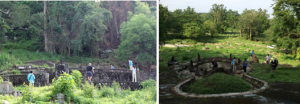
– (Left) As you walk up the hill towards Ng Boo Bee’s majestic tomb, you’ll see the 3-levels of the stone platform, which looks like a fort (photo by Bianca Polak) – (Right) The View from the back of Ng Boo Bee’s tomb (photo by Raymond Goh)
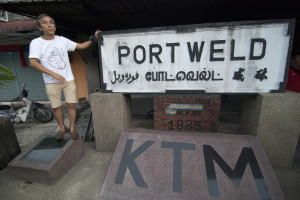
Our guide Ah Kew explains Ng Boo Bee built the first railway in Malaya for the British at Port Weld (photo Simone Lee)
Kwantung Cemetery Kwangtung Cemetery contains burials mostly of Cantonese and Hakka residence.
Taiping War Cemetery The fallen soldiers who defended Malaya from the invading Japanese forces were interred in this cemetery. There are 3 sections of the cemetery; the Christians (on one side of the road), the Muslims and Indians (on the other side of the road).

(from left to right): A tombstone for an Indian soldier, view of Christian side of the War Cemetery, and a tombstone for an English soldier (photo Simone Lee)
Amongst over 850 tombs are tombs of 4 volunteer soldiers. Three of them, Lim Poh Ann, Tang Bee Choon and Ong Kim Sai, were sent to fight in Singapore where they died. After the war, their bodies were returned and given a soldier’s burial.

– (Top row) The 4 fallen soldiers who volunteered to defend our land. – (Bottom row) Lim Poh Ann, Ong Kim Sai and Tang Bee Choon were sent to Singapore, where they were killed in action (photo Simone Lee)
As more immigrants were brought in to work in the booming new town, many temples were built. A temple which has stood the test of time is the Sam Wong Yah temple. The temple was built by Loke Yew, a millionaire and philanthropist who came to Singapore to seek his fortune. He started work at a provision shop at Market Street until he saved enough to open one of his own. He then travelled to Taiping to explore the tin mining businesses. However, he did not do well and was soon broke. He sought shelter at the hut housing the Sam Wong Yah deities. One night, in a form of a white figure, he dreamt of the deities advising him to go further south to strike it rich. And strike it rich, he did. He returned to Taiping to build the temple around the hut where he had taken shelter.
In Singapore, a road was named after him (Jalan Loke Yew, opposite of the Peranakan Museum at Armenian Street) in honour of his contributions while the Cathay Gallery at The Cathay (founded by Loke Yew) showcases the history of the building and the Loke family.
Matang Museum aka Ngah Ibrahim Mansion Ngah Ibrahim succeeded his father, Long Jaafar as the Malay chieftain of Larut. He fortified his mansion by building thick brick walls around it, resisting the violence between the Ghee Hin and Hai San fights. Part of the wall was damaged by a Japanese war plane which crashed into it. In the mansion are stories and artifacts belonging to Ngah Ibrahim and showcased what the mansion was used as after Ngah Ibrahim was exiled in Seychelles. He was never allowed to return and died in Singapore (1887). In 2006, his remains were exhumed from Masjid Al-junied and reinterred in the compound of his grand old mansion which now is the Matang Museum.
Other Attractions

Taiping Lake Gardens, originally a mining ground, is the first public garden in Malaya since it’s conversion in 1880. The beautiful 120 year old rain trees line the road around the lake have been a hot subject as nature lovers fight to save them from urban threats. (photo Simone Lee)
Upon our return in Singapore, a fellow member of the Heritage Singapore – Bukit Brown group asked, “did you guys do anything else in Taiping but eat?”, questioning the amount of food postings (and food) we had on the our Facebook pages. We certainly did and visited many more places apart from the ones featured in this write-up but there is simply too much to write in just one post. Besides, the best way to learn more about a place is to be there in person. There are many more that we didn’t get to explore. We certainly fell-love with Taiping’s charm and hope to go back in the near future. If you do plan to visit Taiping, do contact Lee Ah Kew through http://ahkew.blogkaki.net Ah Kew is a freelance writer and field historian, whose knowledge and collection of folk stories would enhance your experience at Taiping. Ah Kew’s article on the Brownies 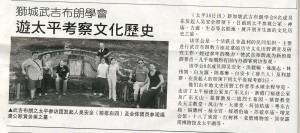

***********************
Editor’s note: If you have enjoyed Simone’s blog post and photo essay, do leave a comment and encourage her to do more. She is the “official” brownie travel concierge

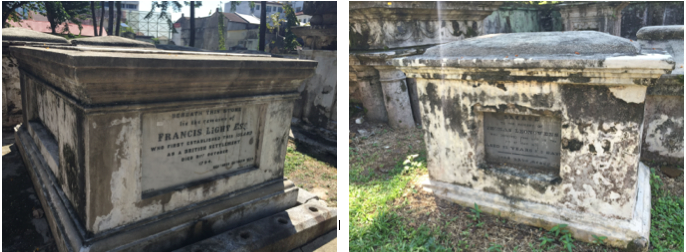





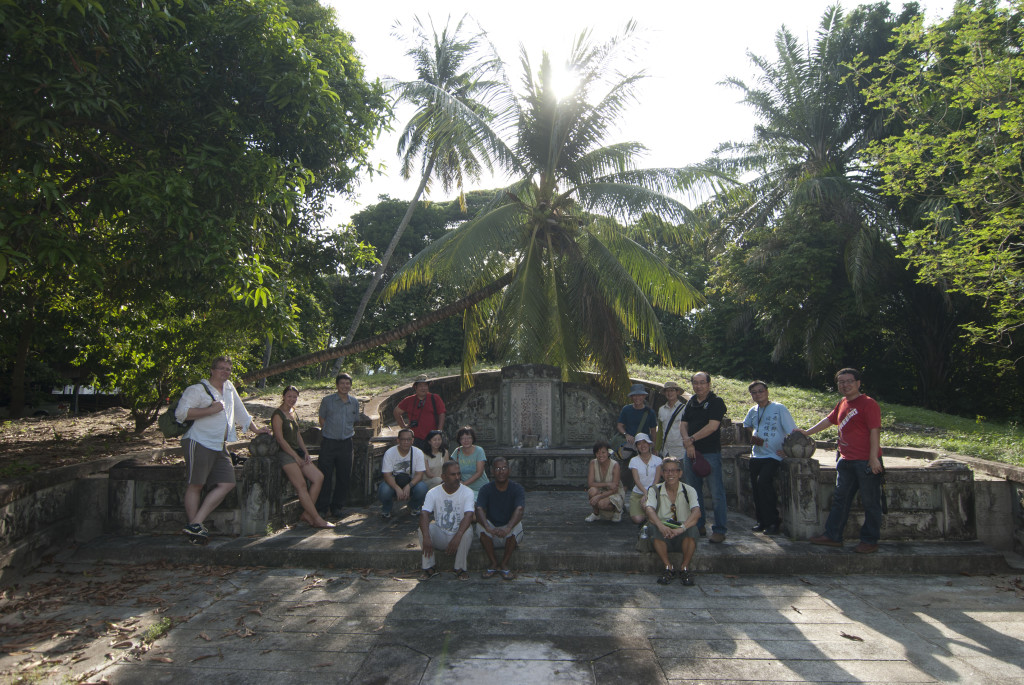
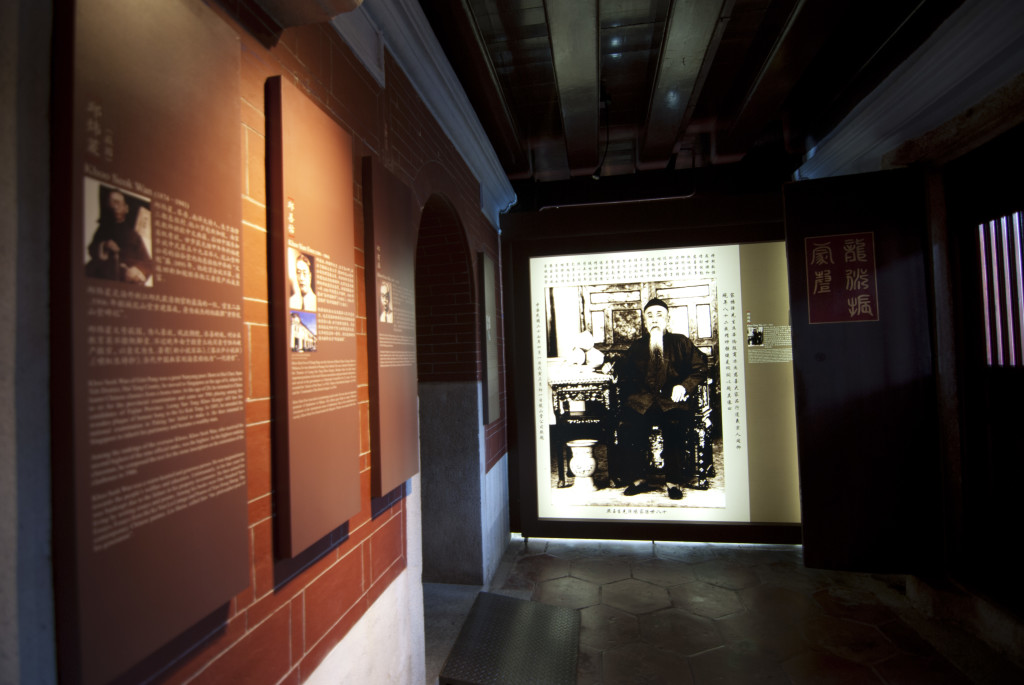

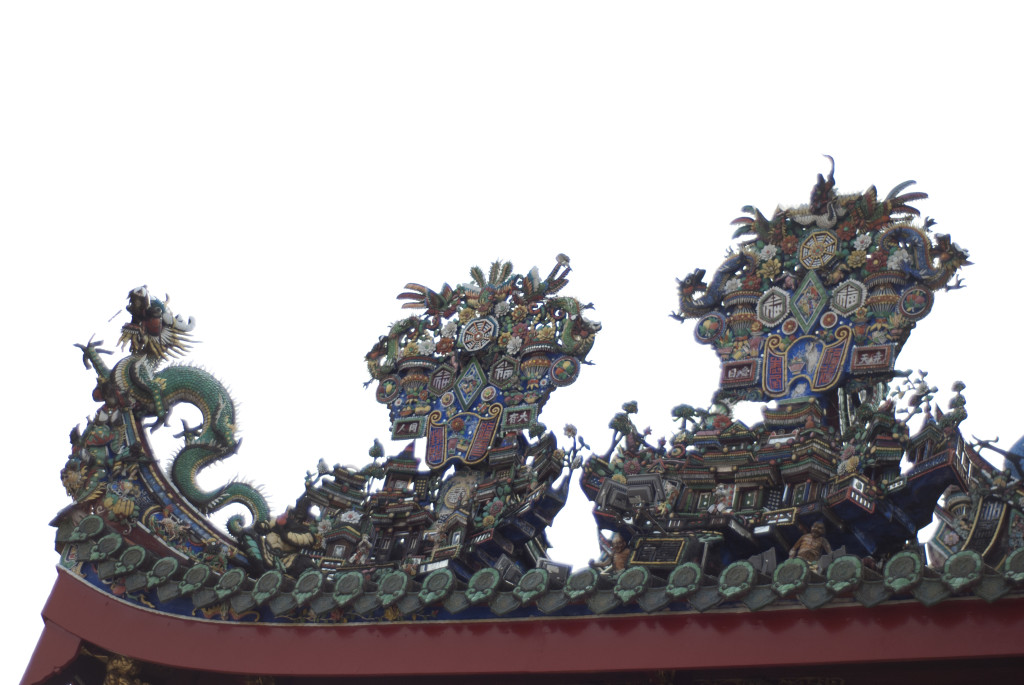






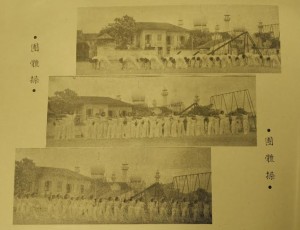
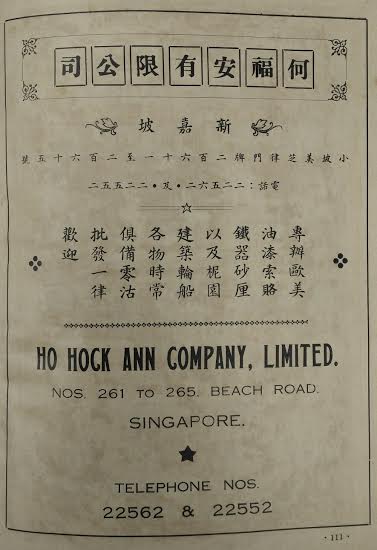

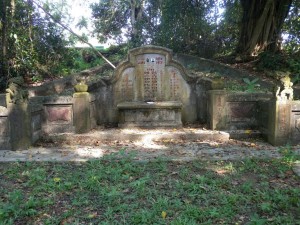

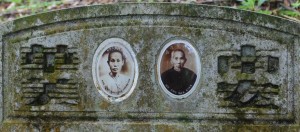

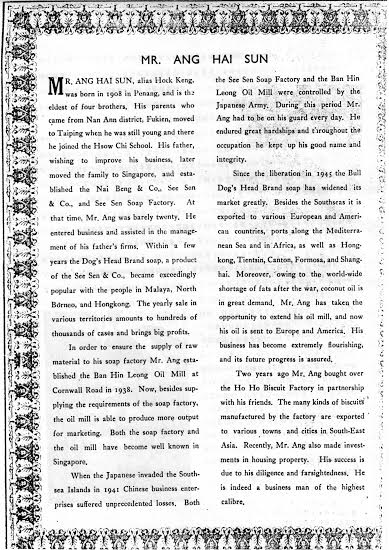
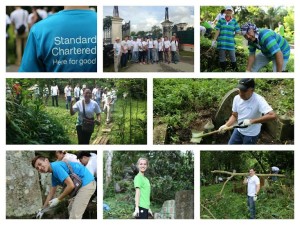
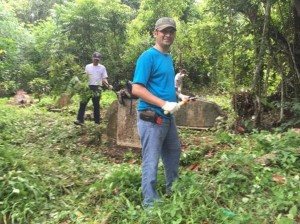
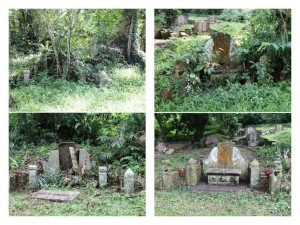
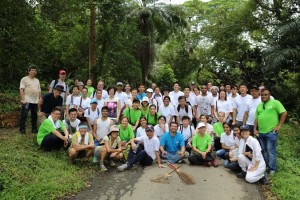
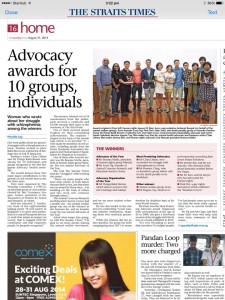
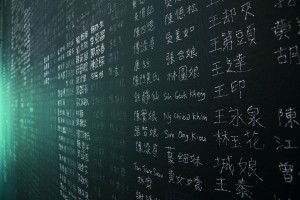
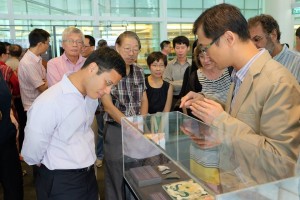


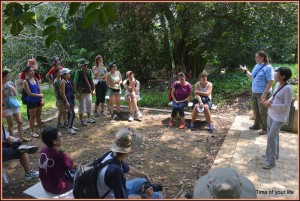

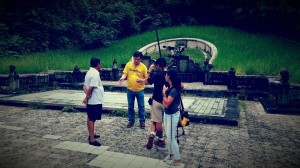

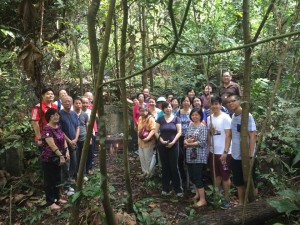
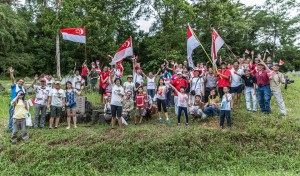
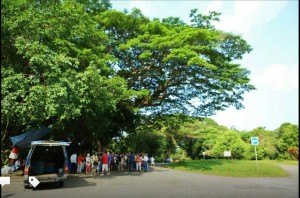
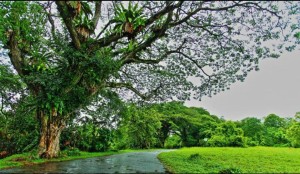

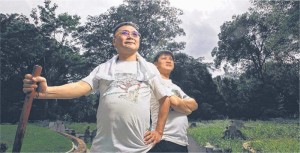

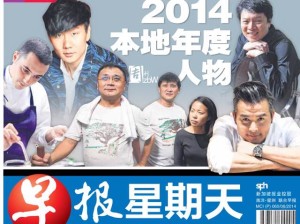








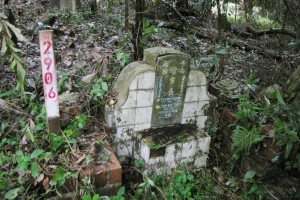
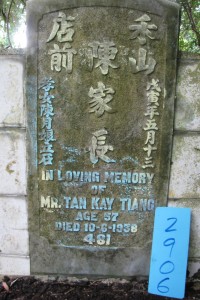

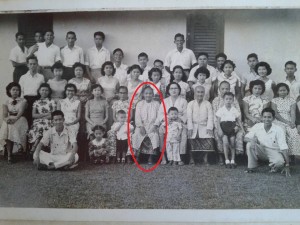

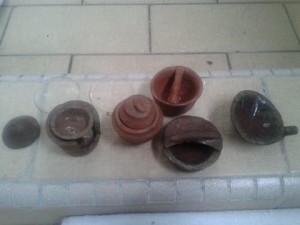
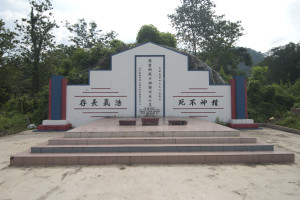
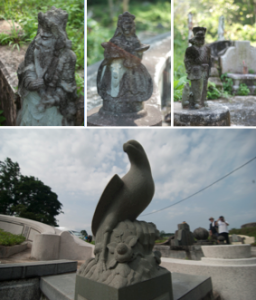





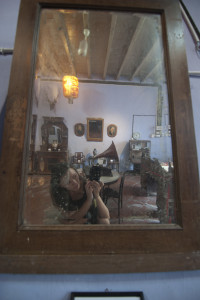
Recent Comments